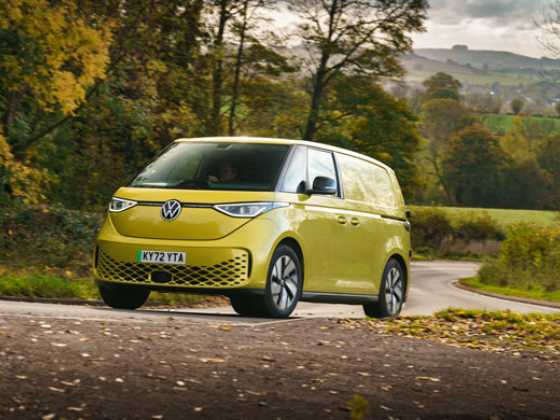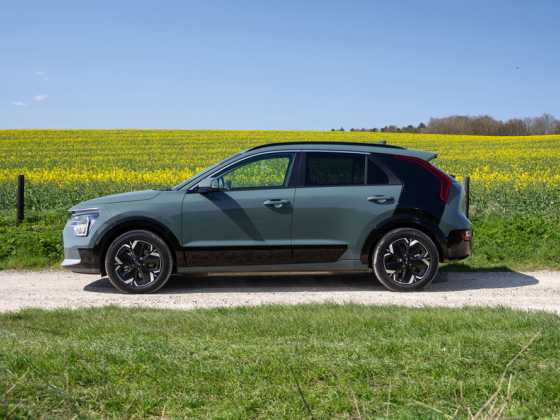Light smarting from smarted
With the environment uppermost in the majority of motorists’ minds and no less than 100 examples of a special smart car running around London, Iain Robertson has obtained an exclusive test of smart’s clean-air technology
 Returning from the centre of the City of Lincoln to my home, a mere 12 miles distant in the gently rolling Lincolnshire countryside, I crept silently along daffodil-lined country lanes spotting the wild-life appear, blissfully unaware that I was passing their homes.
Returning from the centre of the City of Lincoln to my home, a mere 12 miles distant in the gently rolling Lincolnshire countryside, I crept silently along daffodil-lined country lanes spotting the wild-life appear, blissfully unaware that I was passing their homes.
It was the ideal scene of tremendous rural tranquillity. The air was cool but the sun shone. Birds twittered their spring trills attracting new mates and building nests. Lambs gambolled joyfully in the fields. A badger, three squirrels and a family of spring rabbits ambled across the lane at various moments and how did I feel? Not elated, I can tell you; I was terrified!
Safe operating charge
The reason for my abject terror was not linked to the flora and fauna but rather to the SOC gauge located atop the smart car’s dashboard. Instead of a rev-counter, which would be pointless in a car like the smart ed, which has no internal combustion engine located behind the front seats, but does have a somewhat smaller electric engine and fore-and-aft transmission instead (with rechargeable batteries located beneath the seats), the SOC dial shows the Safe Operating Charge and it was perilously close to the red-line, which in this car, means a tad to close to ZERO charge.
My day had already started in the most environmentally friendly manner. A breakfast of bran flakes and fresh orange juice were good for the system. Having divested myself of extra addenda, including the mobile telephone and even a heavyweight jacket, to reduce weight and potentially extend the mileage capability of the car, I was set for my inaugural test drive into town. After all, those awfully nice people at smart UK had informed me that I could expect at least a fifty miles range from a full charge. I removed the bright yellow plug from the kitchen socket, passing it through the open window to where it self-coiled itself alongside the smart car’s flanks.
Having locked the doors at Chez Robertson, I removed the cable from the car’s in-built filler-cap and placed it in the flat passenger footwell. After all, I would not be requiring it until my return home. Yet, little did I appreciate that several full-throttle ‘blasts’ along the A57 and A46 and then from traffic signals around town would drain the battery pack to the point of no return. If nothing else, it proved that the smart ed has its place in city centre motoring quite secure, when most commutes are less than ten miles each-way.
On my return trip to home, not wishing to be stranded embarrassingly, with this exceptionally expensive prototype, I might not have noticed the local wildlife under normal circumstances, unless it tried to pass suicidally in front of my regular set of wheels. Regardless of how much eco-benefit I may have been performing by not wilting springtime blooms with noxious exhaust fumes, the prospect of being pushed home by a bunny, a badger and a couple of deer was unlikely but looming close.
City vibes
However, there is a point to this car, which TfL (Transport for London) is engaged with totally. The funky smart fortwo is a known quantity to most of us these days. Easy to park, highly manoeuvrable and beloved by fans of cheeky, cheery and zesty personal transport media, while it is perfectly acceptable in the petrol-powered scene for its mix of spirited performance and around-town dartiness, its peashooter exhaust pipe emitting around 112g/km, which qualifies it for zero charge in the city’s Congestion Charge Zone and a mere £35 fee for its road tax disc, an all-electric version that costs around £0.08 per night to (trickle) recharge/refuel is a boon to city dwellers.
Its top speed is a fairly unremarkable 65mph (indicated, as it is governed to 60mph actual), a speed that most users will never reach, let alone wish to exceed in town, although it does feature moderately rapid acceleration to 50mph (0-30mph is covered in a mere 6.5 seconds), as long as the batteries are fully-charged. Its nominal range, driven at this rate, is around 30 to 35 miles, although I was pushing its outer envelope by driving from my countryside home into the city, keeping up with main road traffic, carrying out some typical stop-start testing and back again.
The factory states that around 70-miles is the around-town expectation and, if a plug-in opportunity exists (some enlightened councils have installed roadside sockets for such an occurrence), the daily range can be extended to around 100-miles, a figure not to be scoffed at. And it is unbelievably quiet, which makes the occasional parp on the horn inevitable, even if it is just to remove, in my case, a fieldmouse more interested in licking salt off the road surface than the potential of being squished by an eco-friendly smart car.
Room for two
Thanks to a very low centre of gravity, this smart handles even better than the standard item and its cockpit is a remarkably comfortable place for two sizeable adults. Their briefcases, small amounts of luggage, or light shopping can be carried on the rear engine cover and, as you never need to raise it to top-up the oil, fill-up the water, or even check the spark plugs, there are no concerns about upsetting the contents, which are additionally protected from prying eyes by a small extensible load cover.
However, it would be unrealistic to consider the smart ed’s application outside of London, unless congestion charging becomes a reality in the conurbations of Lincoln, Grimsby and Hull. Yet, stranger things have happened in recent times, as residents of uphill Durham City have discovered. Yet, there is no escaping the fact that the smart ed is going to be more at home in built-up areas, rather than the countryside.
Easy recharging
Recharging the smart ed involves little more than plugging the coiled connector into a socket, where the former petrol filler existed, and plugging the other three-pin end of it into the domestic electricity supply. If you have a socket outside the house, all to the good. If not, and you are prepared to tolerate the potential security risk, passing it through an open window to plug it into the kitchen, rear porch or living-room will serve the recharging process.
A full charge takes eight hours and mere pennies to achieve, at which point the SOC dial is registering around 90 per cent. It will never show 100 per cent, because that is not what battery power is about and constant recharging, even though the Liquid Sodium Nickel Chloride (NaNiCl) battery pack is said to have no ‘memory’, does grind down its ultimate capacity, especially on a hard-driven prototype such as this. Incidentally, this pack is entirely eco-friendly, unlike the NiMH (Nickel Metal Hydride) units used by Toyota and Honda in their hybrid cars, which can cause highly awkward recycling issues.
Motivating it could not be simpler. It starts in Neutral and your choice of Drive for forward motion or Reverse, which merely changes the polarity of the Zytek-developed motor, needs to be done with the right foot planted firmly on the brake pedal. Otherwise, it is throttle for go and try not to use the electric air-con, the CD stereo system, the electric windows, or anything else that might drain the batteries to panic level (on my concerned trip home, I tried to avoid indicators, braking and anything else that might drain the remaining SOC to danger level).
Smart price
Buying into this aspect of the smart car phenomenon is expected to cost around £17,000, which will be the market-acceptable rate for an EV (electric vehicle), although smart is not being entirely clear of how it intends to supply the battery pack or provide surety to potential owners of how durable it might be in continuous use. However, that is what the unique TfL project is all about and the myriad operators working under the scheme are feeding their information back to smart, which will compile and assess the viability of commencing rental/lease schemes for the battery packs, the cost of which is offset against the charges that might otherwise apply. The smart ed attracts none of them.
The durability of the car is not in question. Its Tridion semi-exoskeleton is among the safest, all-enveloping structures acting as a base for any motorcar. Although produced from high-tensile steel, for added strength, the lightweight plastic panels that form the bodywork (available in the full range of sparky colour schemes) are rot-free and recyclable. The NCap crash test procedure has provided the smart with an exceptionally high rating for both occupant and pedestrian safety.
In fact, the smart ed is a full production car, albeit in prototype electric-power form. The smart concept and practice makes it the most appropriate car for city use and, if you really want to live in the countryside and make the daily commute to the city centre, well there is always the conventional petrol-powered smart for which the only additional financial outlay will be the £35 tax disc, up to 60mpg fuel economy and the associated low running costs.
In truth, smart ed is immense fun to pedal around and, as long as our government feels that oil or coal-fired power stations are less of a threat to our fragile eco-structure than a puffing exhaust pipe, the smart ed has a secure future, not least in centre of the City of London, where it is projected by eco-bodies and people-that-know-these-things that around 10,000 smarts and similar electric vehicles will find homes within the next ten years. In the meantime, shorter trips, less unnecessary driving and the use of a diesel engine will satisfy my eco-measures for the next year or so. Incidentally, I did return home with enough charge left in the pack to mean that my worries were unfounded but, hell, we all need a thrill in our tawdry lives, do we not?
Model tested: smart ed
Body-styles: 3-door city-car
Engines: electric
Trim grades: passion
Prices: c.£17,000, but this development car is worth around £250,000!
In the showroom: c.2010 in London
Star rating: 5 STARS
Warranty: Three years, unlimited miles on car, battery pack is leased/rented
Website: www.thesmart.co.uk









